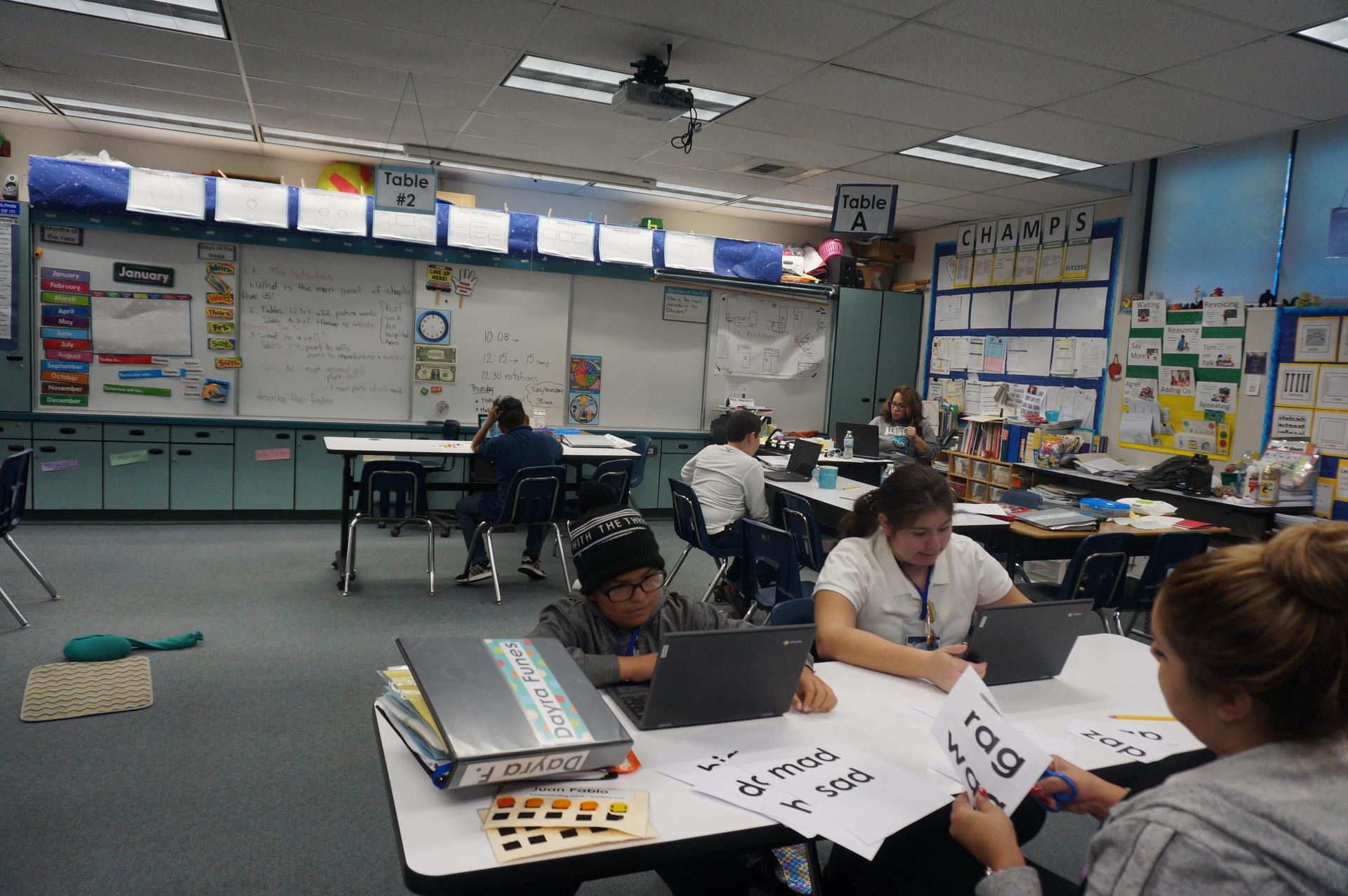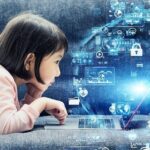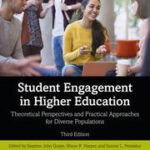The hallmark of Special Education is providing individualized support and accommodations to meet the unique needs of students with disabilities. In this field, educators employ specialized instructional strategies to foster academic and social development, promoting inclusion and equality for all learners.
Whether through personalized lesson plans, assistive technology, or modified assessments, Special Education ensures that every student has the opportunity to thrive and reach their full potential. By tailoring instruction to address specific strengths and challenges, this educational approach aims to empower students with disabilities and equip them with the necessary skills for success in school and beyond.

Credit: www.amazon.com
Understanding Special Education
The hallmark of special education is the provision of individualized support and services to meet the unique needs of students with disabilities. Special education aims to ensure that all students have access to an equitable and inclusive education, regardless of their abilities.
Special education is a term used to describe the education of students with disabilities who require additional support to succeed academically and socially. It encompasses a wide range of services and interventions tailored to meet the specific needs of each student. These may include specialized instruction, accommodations, modifications, assistive technology, and related services such as speech therapy or occupational therapy.
| Definition of Special Education | Purpose of Special Education | Legislation and Policies | Inclusion vs. Mainstreaming |
|---|---|---|---|
| It refers to the education of students with disabilities who require additional support to succeed academically and socially. | Special education aims to provide individualized support and services to meet the unique needs of students with disabilities. | Legislation and policies ensure that students with disabilities have equal access to education and the necessary support and accommodations. | Inclusion promotes the idea of educating students with disabilities alongside their typically developing peers in regular classrooms, while mainstreaming involves the selective placement of students with disabilities in general education settings for specific periods of time. |
Understanding special education is important for educators, parents, and communities to ensure the successful inclusion and support of students with disabilities. By providing appropriate interventions and accommodations, special education helps to create a more inclusive and equitable educational experience for all.
Identifying Students With Special Needs
Assessing and evaluating students is the first crucial step in identifying special needs. This involves comprehensive assessment of the student’s abilities, strengths, and areas requiring improvement. It includes gathering information through observations, standardized tests, interviews, and reviewing medical records.
Individualized Education Program (IEP) is an essential tool in special education. It is a personalized plan that outlines the specific goals, accommodations, and instructional strategies for each student with special needs. The IEP ensures that teachers and support staff are well-informed and equipped to meet the unique needs of the student.
Utilizing a multidisciplinary team approach is crucial. Teachers, general educators, special educators, school psychologists, therapists, and administrators work together to assess and interpret the student’s needs. This collaborative effort ensures a comprehensive evaluation and the development of appropriate interventions and accommodations.
Collaboration with parents and guardians is fundamental. Parents possess valuable insights into their child’s strengths, challenges, and preferences. Their involvement helps create a holistic picture of the student’s needs, ensuring that the educational plan is tailored and responsive to the child’s requirements.
Effective Teaching Strategies In Special Education
Differentiated Instruction: This teaching strategy focuses on tailoring the curriculum and instruction to meet the diverse needs of students in special education. It involves personalizing learning experiences, allowing students to work at their own pace, and providing various materials and resources to accommodate different learning styles and abilities. By embracing differentiation, teachers can effectively engage students and promote meaningful learning.
Assistive Technology: Integrating assistive technology in special education classrooms can significantly enhance students’ learning experiences. Assistive technology tools such as text-to-speech software, speech recognition programs, and adaptive devices enable students with disabilities to access educational materials and participate in educational activities more effectively. Implementing these technologies empowers students and fosters their independence, allowing them to overcome learning barriers and reach their full potential.
Co-Teaching and Collaboration: Collaborative teaching involves a partnership between a general education teacher and a special education teacher, working together to provide instruction to students with diverse needs in the same classroom. This inclusive approach not only addresses individual student needs but also promotes a positive and inclusive learning environment. Co-teachers can share expertise, resources, and responsibilities, fostering a collaborative educational experience that supports the unique learning requirements of each student.
Positive Behavior Supports: Implementing positive behavior supports involves creating a structured and supportive environment that focuses on teaching and reinforcing positive behaviors. It encourages the use of proactive strategies, such as behavior management plans, visual supports, and social-emotional learning activities, to promote appropriate behavior and prevent challenging behaviors. By fostering a positive and supportive classroom climate, teachers can effectively address behavioral challenges and support students in achieving academic and social success.
Addressing Individual Needs In Special Education
Special education is characterized by its ability to address individual needs and provide tailored support to students with diverse challenges. One area of focus within special education is speech and language disorders. These disorders encompass a range of communication difficulties, including difficulties with speech production, understanding and using language, and social communication.
Another aspect that special education attends to is learning disabilities. These disabilities may affect a student’s ability to acquire, process, or retain information, leading to challenges in reading, writing, math, or other academic areas.
Additionally, special education plays a crucial role in supporting students on the autism spectrum disorder. This includes providing individualized interventions, promoting social skills development, and addressing sensory sensitivities.
Furthermore, special education encompasses the realm of emotional and behavioral disorders. These conditions impact a student’s emotional well-being and may result in challenging behaviors that require specialized strategies and support.
Thus, the hallmark of special education lies in its commitment to identifying and addressing the individual needs of students with speech and language disorders, learning disabilities, autism spectrum disorder, and emotional and behavioral disorders.
Creating An Inclusive Environment
Universal Design for Learning (UDL): UDL is a teaching approach that provides multiple means of representation, engagement, and expression to meet the diverse learning needs of students. It emphasizes the use of technology and flexible instructional strategies to remove barriers and provide equal access to learning for all students.
Classroom Accommodations and Modifications: Accommodations and modifications are essential in creating an inclusive environment. Accommodations involve changes in how a student learns, while modifications involve changes in what they learn. These adjustments can include providing extra time, using assistive technology, or simplifying content to ensure success for students with special needs.
Peer Tutoring and Peer Mediation: Peer tutoring allows students with special needs to receive support and instruction from their peers. It enhances social interaction and provides a sense of belonging. Peer mediation helps students resolve conflicts through the guidance of neutral peers. It promotes problem-solving skills and positive relationships among students.
Fostering Social and Emotional Development: Special education focuses not only on academic growth but also on the social and emotional development of students. Creating a supportive and inclusive environment involves fostering positive relationships, promoting empathy and understanding, and providing opportunities for social skills development.
Supporting Transition And Post-school Outcomes
Lorem ipsum dolor sit amet, consectetur adipiscing elit. Nam eu ante massa. Sed et dui consequat, tincidunt metus sed, feugiat dolor. Fusce eget ligula non purus commodo congue. Sed ut ipsum commodo, euismod mauris sed, aliquet diam. Phasellus pretium finibus mauris, ut aliquam orci feugiat ac. Aenean venenatis quam ipsum, ac volutpat lectus laoreet a. Cras consequat sem malesuada pulvinar bibendum. Integer hendrerit, metus sit amet mollis consectetur, risus diam interdum quam, ut finibus libero nibh et orci. Proin eget massa nec ex rutrum rutrum.
Phasellus vestibulum eleifend dui, vel imperdiet elit dictum vitae. Mauris convallis libero at nulla viverra feugiat. Pellentesque habitant morbi tristique senectus et netus et malesuada fames ac turpis egestas. Mauris rhoncus ex quis risus laoreet hendrerit sit amet ut felis. Etiam aliquam ornare lacus et sollicitudin. Ut auctor orci non sem feugiat, sit amet egestas nisl interdum. Phasellus id sodales nibh. Integer tortor lectus, volutpat a justo vel, facilisis lobortis velit.
| Transition Planning | Vocational and Career Exploration | Independent Living Skills | Community Integration and Support |
|---|---|---|---|
| Sed et dui consequat | Lorem ipsum dolor sit amet | Ut auctor orci non sem | Phasellus id sodales nibh |
| Tincidunt metus sed | Mauris convallis libero at nulla | Etiam aliquam ornare lacus | Integer tortor lectus |
| Feugiat dolor | Pellentesque habitant morbi | Ut felis | Volutpat a justo vel |
Responsibilities Of Special Education Teachers
htmlThe hallmark of special education lies in the responsibilities of special education teachers. These professionals play a crucial role in providing individualized instruction and support to students with special needs. They work closely with students, tailoring their teaching methods to meet each student’s unique learning requirements and abilities.
Special education teachers also collaborate extensively with general education teachers to develop inclusive classroom environments. By sharing their expertise and experience, they ensure that all students, regardless of their abilities, receive quality education and support.
Furthermore, special education teachers are responsible for monitoring student progress. They track students’ academic and social development, analyze their growth, and provide necessary interventions or modifications to their educational plans to help them succeed.
Additionally, special education teachers act as advocates for students with special needs. They ensure that students receive the accommodations and support necessary for their academic, emotional, and social well-being. They collaborate with parents, administrators, and other professionals to create environments that empower students with special needs to reach their fullest potential.
Qualities And Skills Of Successful Special Education Teachers
htmlQualities and Skills of Successful Special Education Teachers
| Qualities | Skills |
|---|---|
| Patience and Empathy | Strong Communication Skills |
| Flexibility and Adaptability | Knowledge of Special Education Laws and Strategies |
Successful special education teachers possess a unique set of qualities and skills that contribute to their effectiveness in the field. Patience and empathy are essential qualities, as they allow teachers to understand and support the diverse needs of their students. These teachers also demonstrate flexibility and adaptability when it comes to meeting the individualized requirements of each student. Strong communication skills enable them to effectively collaborate with parents, fellow educators, and other professionals involved in the students’ education. Additionally, they possess a comprehensive knowledge of special education laws and strategies to ensure compliance and provide appropriate support. By combining these qualities and skills, special education teachers create inclusive and empowering learning environments for their students.
Professional Development For Special Education Teachers
| Professional Development for Special Education Teachers |
| Ongoing Training and Workshops |
| Special education teachers engage in ongoing training and workshops to stay updated with the latest techniques, strategies, and policies in their field. These opportunities provide them with a platform to enhance their knowledge and skills, enabling them to meet the diverse needs of their students effectively. By attending these specialized training sessions, teachers gain insights into evidence-based practices, classroom management, assessment methods, and assistive technologies. They also learn about legal requirements, inclusion best practices, and the latest research findings. These workshops often feature experts in the field who share their experiences, provide guidance, and offer practical strategies that can be implemented in the classroom. Ongoing training gives teachers the tools and resources they need to continuously improve their instructional practices and create inclusive learning environments. |
| Keeping Up with Research and Best Practices |
| Special education teachers strive to stay updated with the latest research and best practices in the field. They regularly explore current literature, academic journals, and educational resources that focus on special educational needs. By keeping up with research, teachers can incorporate evidence-based strategies into their teaching practices and promote positive outcomes for their students. They learn about new interventions, therapies, and instructional methods that have proven to be effective for students with disabilities. By staying informed, teachers can make informed decisions about their instructional approaches, adapt their teaching methods based on research evidence, and provide high-quality education to their students with special needs. |
| Peer Collaboration and Support |
| Special education teachers engage in peer collaboration and seek support from their colleagues. By collaborating with fellow educators, they can share experiences, exchange ideas, and learn from each other’s successes and challenges. Peer collaboration provides a platform for discussing instructional strategies, problem-solving, and exploring innovative approaches to teaching students with disabilities. Through dialogue and sharing of resources, teachers can enhance their instructional practices and make informed decisions that positively impact their students’ learning. Collaborative environments also foster a sense of camaraderie and support, which can be invaluable for special education teachers who often face unique challenges in their day-to-day work. |
| Networking and Professional Organizations |
| Special education teachers participate in networking opportunities and engage with professional organizations in their field. These networks and organizations provide teachers with access to a wider community of experts, mentors, and peers who can offer guidance, support, and additional resources. By attending conferences, seminars, and webinars organized by these organizations, teachers can stay updated with the latest advancements and research in special education. They can also establish connections with professionals who share similar interests and challenges, allowing for collaboration and the exchange of ideas. Networking with professionals beyond their immediate school or district helps special education teachers broaden their perspectives and approaches, leading to improved outcomes for their students. |
Advancements In Special Education
Advancements in Special Education
Special education has come a long way in recent years, with significant advancements in teaching methods and strategies. One important development is the integration of technology in the classroom. By incorporating technology tools and resources, educators are able to provide a more interactive and engaging learning experience for students with special needs.
Another key aspect of special education is person-centered planning and self-determination. This approach recognizes that each student has unique abilities, interests, and goals. By involving students in the planning process and fostering their self-determination skills, educators empower them to take an active role in their education and future.
Inclusive education models have also shaped the landscape of special education. These models promote the integration of students with disabilities into mainstream classrooms, fostering a sense of belonging and encouraging social interaction and cooperation among all students.
Lastly, empowering students with disabilities is a fundamental goal of special education. By providing the necessary support, accommodations, and resources, educators enable students to reach their full potential and develop the skills they need to succeed academically and beyond.
Addressing Current Challenges
Addressing Current Challenges
- Funding and Resource Allocation: One of the significant challenges in special education is the inequitable distribution of funds and resources. Many schools struggle to provide adequate funding for specialized instructional materials, assistive technology, and professional development for teachers.
- Inequities in Access to Quality Education: Students with disabilities often face barriers when it comes to accessing quality education. Limited resources may result in a lack of accommodations or support services, hindering their educational progress and opportunities for success.
- Teacher Shortages in Special Education: There is a shortage of qualified special education teachers, making it difficult to meet the diverse needs of students. This shortage leads to larger class sizes, insufficient individualized attention, and challenges in implementing personalized learning plans.
- Overrepresentation and Disproportionality in Special Education: Another issue is the overrepresentation and disproportionality of certain student populations in special education. For instance, students from minority backgrounds, particularly African American and Hispanic, are more likely to be identified with disabilities and placed in special education programs.
Advocacy And Policy Changes
html
Advocacy and Policy Changes
Promoting inclusive education policies is a hallmark of special education. By advocating for these policies, we aim to ensure that students with special needs have equal access to education. It is essential to educate the community about special education to foster understanding and support for these students. Recognizing and celebrating diversity and individual abilities is crucial in creating an inclusive educational environment. This not only helps students with special needs feel valued but also promotes a culture of acceptance and respect. Furthermore, by ensuring equal opportunities for students with special needs, we are breaking barriers and paving the way for their success. Through these policy changes, we can create a more inclusive educational system that benefits all students.
Frequently Asked Questions For What Is The Hallmark Of Special Education
What Are The Seven Core Elements Of Special Education?
The seven core elements of special education include individualized education programs (IEPs), adaptations and modifications, specialized instruction, supportive services, collaboration, progress monitoring, and transition planning. These elements address the unique needs of students with disabilities to ensure they receive a tailored education that fosters their development and success.
What Is Special Education Quizlet?
Quizlet offers a range of resources for special education, including flashcards, study guides, and practice quizzes. These tools help students with disabilities learn and reinforce key concepts in a user-friendly and interactive manner, promoting active learning and retention.
What Was Historically The Most Significant Legislation For Special Education?
The most significant legislation for special education in history is the Individuals with Disabilities Education Act (IDEA). It ensures that students with disabilities receive free and appropriate education, including special services and accommodations, in public schools. IDEA promotes equal opportunities and supports inclusive education for all students.
How Do Teachers Identify Students With Special Needs?
Teachers identify students with special needs through various means such as regular assessments, observations, and consultations with parents and specialists. They look for signs like academic struggles, behavior issues, and social difficulties to provide appropriate support.
Conclusion
Special education serves as a beacon of inclusivity, providing unique learning opportunities tailored to the needs of exceptional students. Through personalized instruction, specialized interventions, and a nurturing environment, special education paves the way for academic and personal growth. By embracing individual differences, fostering a sense of belonging, and promoting a supportive community, we create an educational landscape that empowers every learner to thrive.
Let us continue to champion special education, celebrating the diversity and potential of all students.







